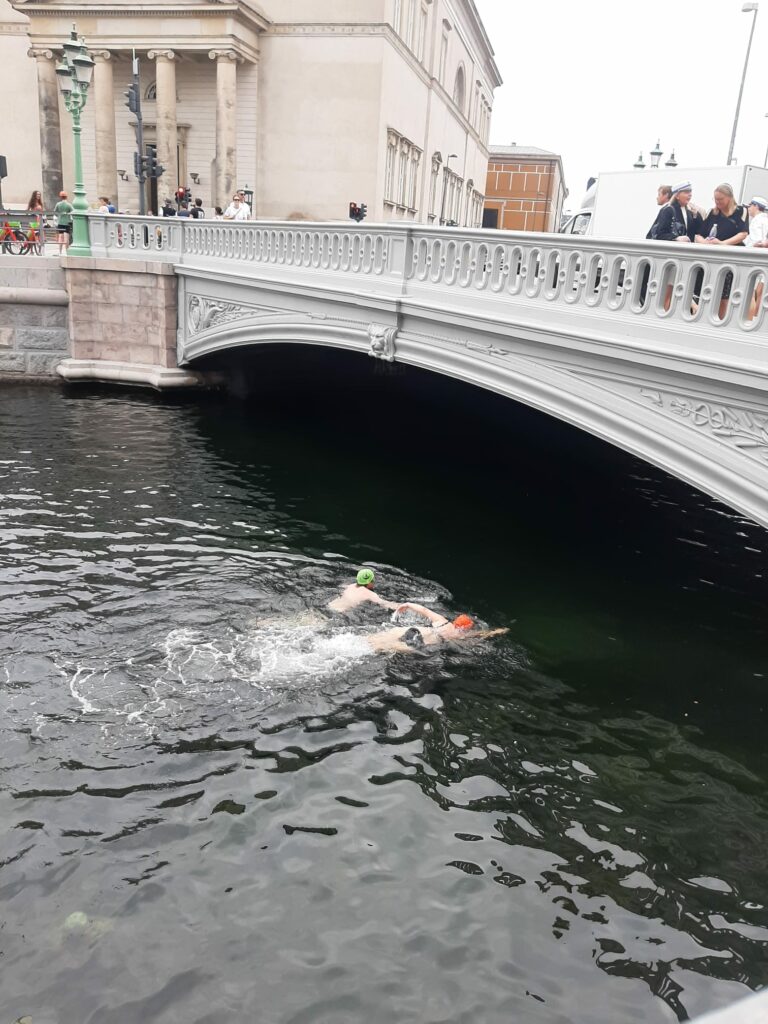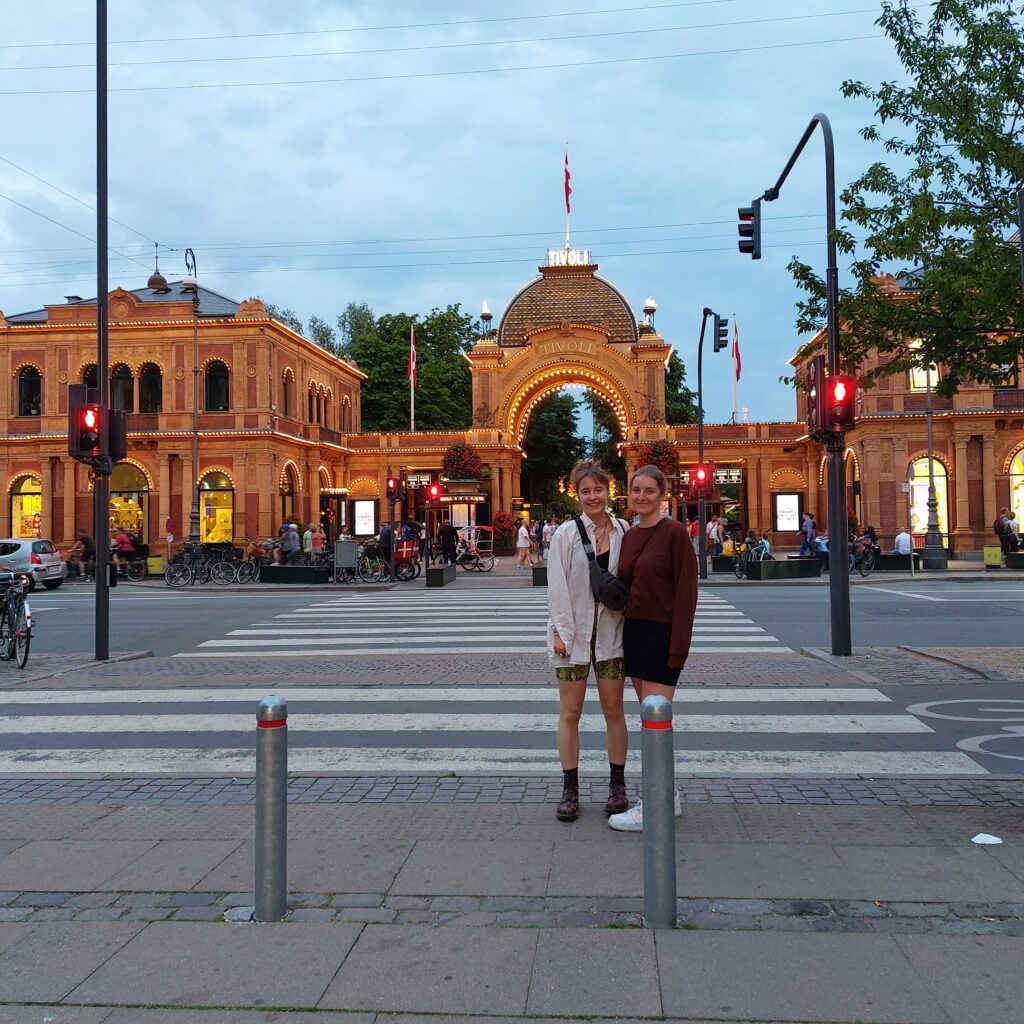We were in Copenhagen at the end of june. Where we could witness the celebration of ‘Studenten’. While in Norway we have “russefeiring” which lasts a long time, this is supposedly a one day celebration (although we saw students partying all the weekend). The class hires one car where they can stand on the truck bed and party and drive around to all parents. All these cars stop on Højbro Plads. Accidents happen – some got the party cut short.

Strangely enough, we heard no one singing ‘Tri smi kinisiri pi Hibri plids’, but there was enough noise without that. The stork fountain was foaming, so someone had had fun with dish washing detergent.

At Højbro (High Bridge) there has been a bridge over to Slotsholmen since the middle ages. Todays bridge is from 1878 and drawn by Vilhelm Dahlerup. But we can’t really say it is very high. At Højbro you can meet The Merman in a sculpture of Suste Bonnén. Under water, of course.

This work of art was given to Copenhagen City in 1992, promising the city would maintain it. And they have – the sculpture was newly renovated.

For this bathing adventure we needed a photographer, our daughter Une volunteered (under pressure). An easy job when the models are as photogenic as this!

We first planned to jump from the quay for the sightseeing boats, right next to the statues. But there was a sign forbidding anyone not going on a cruise to be there (nothing against bathing). While we were contemplating this, a boat actually came and we realized this was a bad idea. The solution was to use one of the ladders on the other side of Højbro bridge. Idun was a little scared we would be “saved”. But there was nothing to worry about. Hardly anyone took notice of us undressing, climbing down the ladder and going into the water. Only smiling faces and waving hands from the passing boats. And the sculpture? Great!

The fairytale about Agnete and the Merman is rooted in middle age ballads, but is a 1800’s folk song. The song tells about Agnete, who falls in love with a merman and follows him to the bottom of the ocean. She lives with him for eight years and bears him seven sons.
One day, when she hears the church bells ring, she asks for permission to go back to the humans world. And she is allowed, but the Merman reminds her that her children will miss her deeply if she doesn’t return. When Agnete meets her mother, she renounces her children and never returns to the ocean (in the most common version, there are many versions of the story and in some of them she does go back).
Her not returning brings great grief under water, and this we think Bonnén really has shown in these bronce statues.

Hans Christian Andersen actually wrote a theater play about Agnete, which became a flop. His later story about “The Little Mermaid”, however, was a hit. It is a plot twist of Agnete’s story. While the human girl Agnete was lured into the ocean by a merman, The Little Mermaid went onto land drawn towards a human man. Andersen dropped the kid part, but also has a really tragic ending (very different from Disney’s version). Outside of Denmark, Agnete isn’t much known and The Little Mermaid is by most people thought to be completely H.C.Andersen’s own idea.
A similar motive we can find in old stories about getting “taken into the mountains”. You could e.g. listen to Gåte’s song about Margit Hjukse. Who takes a quite different choice from Agnete.
So it was time to swim back to the human world again. It was definitely a good time to take a bath with The Merman. The water was clean and clear. Until a boat passed, which had a diesel leak, so we could see stripes floating from it. Not that they seemed to bother much when we told them.

What to do in Copenhagen after a nice bath? We found Tivoli to be a good choice!
